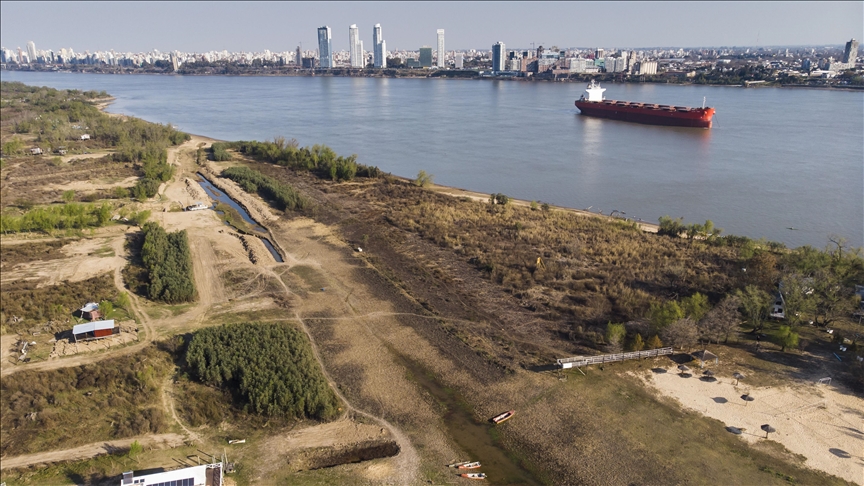Major Parana river's water levels still below historical figures: Argentine authority
Second largest river system in South America is important biodiverse waterway
 An aerial view of the Parana River, which water level reached a historic low, in Argentina, on February 15, 2022. ( Marcelo Manera - Anadolu Agency )
An aerial view of the Parana River, which water level reached a historic low, in Argentina, on February 15, 2022. ( Marcelo Manera - Anadolu Agency )
LONDON
Despite some improvements, major Parana river's levels are still below historical figures, according to the latest data from the National Water Institute (INA) in Argentina.
Their latest report says the river is 1.5 meters lower than normal in the area of Rosario, however following last year's record-low level, the river is currently 1.36 meters higher than in 2021.
According to the INA study, the most observable aspect was documented at the confluence of the Parana river with the Paraguay River, located in the north, after rain fell in late May.
In Greater Rosario, home to an important agricultural port, this month's average is "1.51 meters below the normal level, but 1.36 meters higher than in June 2021".
The study went on to say that despite flooding on June 10, the river hasn't "significantly" altered its low water levels across the Delta, as "the situation continues to be characterized by river levels well below normal."
Alongside its role as a biodiverse region, the Parana waterway plays an important role in Argentina's exports, notably from the agro-industrial sectors.
Since June 3, the water levels are in the "middle water range" which are "gradually" returning to lower water levels, as the study notes "this month's average is expected to be 2.30 meters higher than in June last year".
However, the investigation concluded by suggesting that "the probability of a return to the critical values observed in the last two years is considered low."
The Parana river which runs through Brazil, Paraguay and Argentina for over 4,500 km (2,800 miles), is the second-largest river basin after the Amazon River in South America.
The wetlands area is of important economic, ecological and cultural significance, according to the World Wildlife Fund (WWF) - with around 100 million people dependent on the Parana as a source for water, irrigation for agriculture, energy and fishing. In recent years, the area has been struck hard by rapid urbanization, agriculture and energy development.
In 2021, the Parana's water levels hit their lowest since 1944 while the WWF says urgent action needs to be taken to improve the situation.
Anadolu Agency website contains only a portion of the news stories offered to subscribers in the AA News Broadcasting System (HAS), and in summarized form. Please contact us for subscription options.

